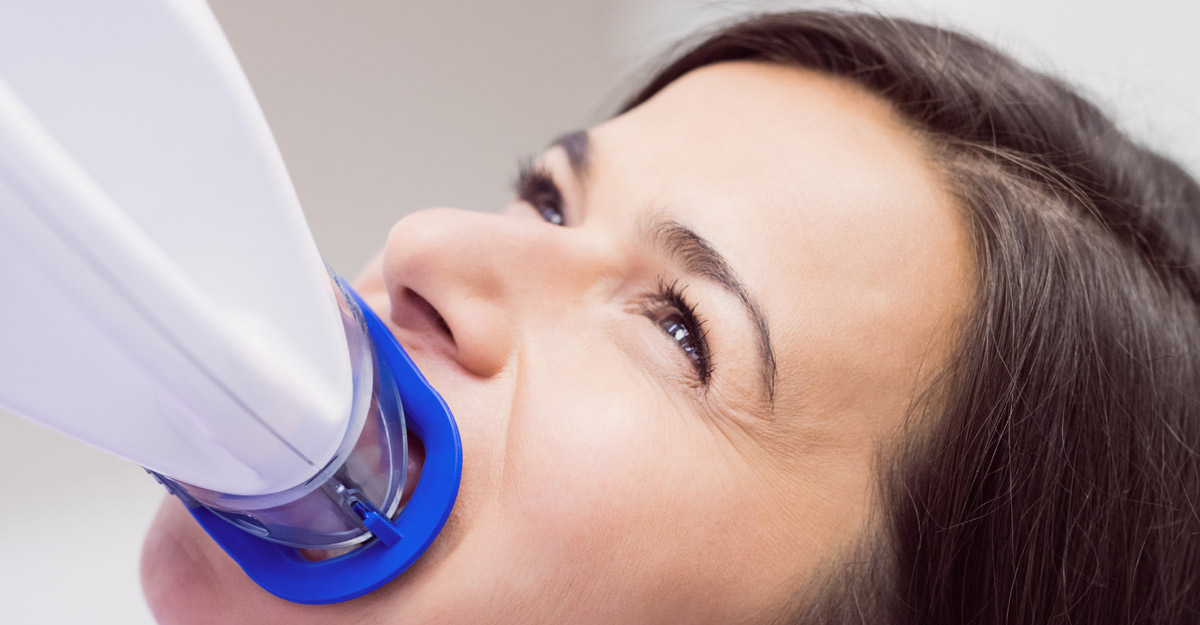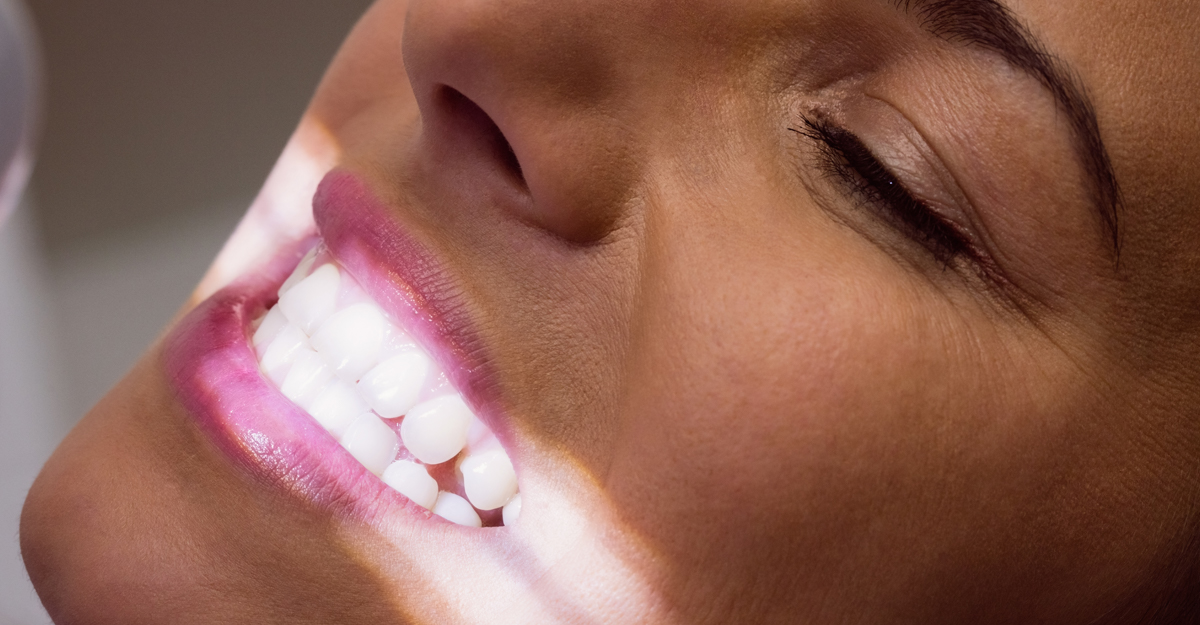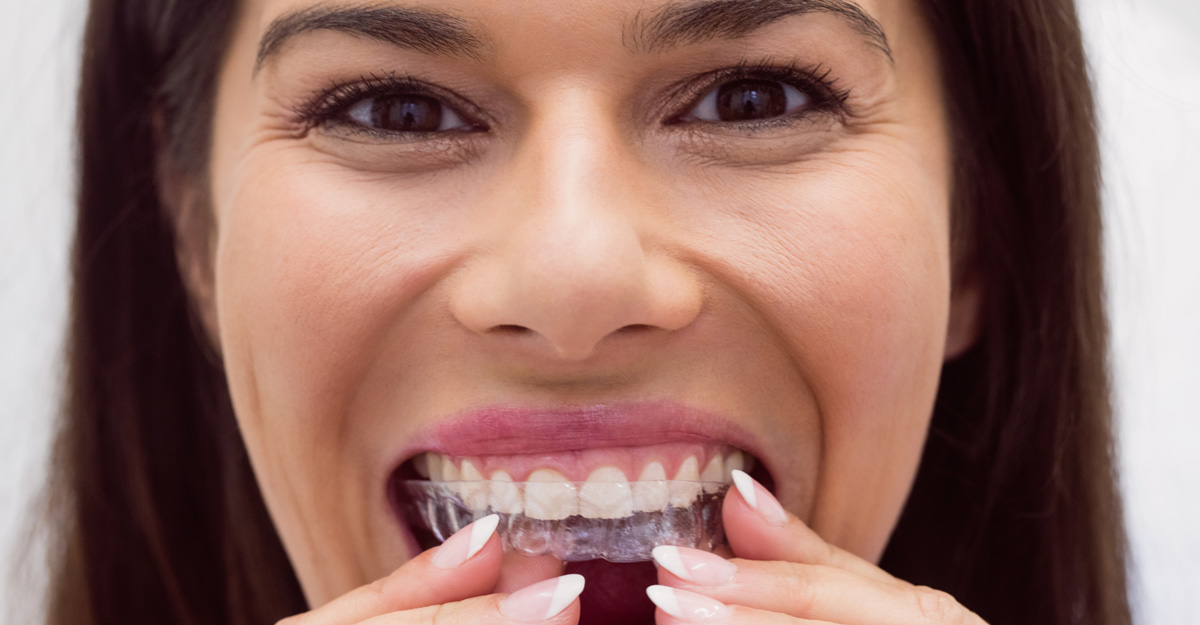
The reasons are numerous for tooth discoloration. First, the teeth become darker over time due to changes in the structure of the tooth itself. The tooth enamel becomes thinner, causing the dentin, which is darker tooth tissue, becoming more transparent. This effect is emphasized by the fact that the color of the dentin itself changes because it creates more and more so-called tertiary dentin, which is darker. On the enamel, microcracks and defects appear, which retain pigments and affect the modified refraction of light. Because of all this, the color of the teeth change and they lose their “vividness” and shine. Genetic factors also significantly determine the color of your teeth. Smoking, foods rich in pigments, often consumption of coffee, tea, red wine or coca-cola are habits that will cause tooth discoloration after many years. In addition, acidic foods and drinks create an erosion of tooth enamel, making teeth more permeable to pigments. Use of some medicines (eg. tetracyclines in pregnancy and in children up to the age of 8) causes the appearance of a yellow-gray-brown tooth color. Other reasons for discoloration may be tooth trauma, bruxism (teeth grinding), fluorosis. On the other hand, poor oral hygiene can cause discoloration, but it comes from the presence of soft and hard deposits, not from the color of the teeth themselves.
It would be best to discuss ways of teeth whitening with your dentist. Before the whitening procedure, teeth and gums should be repaired (removed dental stones and soft deposits, adequate dental fillings, gingiva without any signs of inflammation). Please note that whitening will not change the color of the existing filling, crowns, bridges and facets, so that should be kept in mind before starting work.

In the dentist’s office, the dentist will first determine the color of your teeth. After that, he will apply protection for gingiva and other soft tissues, and then, under controlled working conditions, a bleach. The procedure lasts about an hour, divided into 2-3 shorter sessions of 15-20 minutes. If necessary, it can be repeated. The advantage of the treatment that is performed in the dentist’s office is that the results of bleaching are already seen in the first visit and for a large number of patients no additional treatment is needed.
Teeth whitening that a patient does at home involve taking the dental impressions at the clinic, based on which individual transparent dental trays are made. Patient place bleach (gel) in dental trays, which carries several hours a day or at night. This method of teeth whitening takes several days to several weeks, depending on the type and degree of tooth discoloration, but also from the wish of the patient. Results last longer than teeth whitening in-office. After a certain amount of time, the procedure can be repeated using existing individual dental trays for bleaching.
The advantage of applying gel to individually made trays is that in this way it is possible to evenly adhesion bleach to the surface of your teeth and prevents unnecessary leakage of excess bleach, which can cause unpleasant gum irritation. Whitening kits, which are available for sale in pharmacies and markets, contain factory-made trays, so the efficiency of these systems is considerably lower.

Endodontically treated teeth are mostly bleached from “inside to the outside. This means that the bleach is applied to the tooth, at the entrance of the root canal. Usually, a few days is enough to see the result of this method of bleaching. After the end of treatment period and color stabilization period (a few days), achieved tooth color is determined and a new fill is set.
Firstly, the origin of these defects should be determined. If it’s the initial stage of caries, then these lesions should be repaired earlier (application of a high concentration of fluorine, fillings for already present cavities). In the case of defects in the structure of the enamel, then bleaching the color of the remaining part of the tooth can be equated with the presence of white spots.
Professional teeth whitening is performed with carbamide peroxide or hydrogen peroxide preparations of high concentration, so they can be applied only by a dentist in strictly controlled conditions, to prevent unwanted damage to soft and hard tissue.
Combined tooth whitening is carried out with carbamide peroxide preparations at slightly lower concentrations, which are safe for home use. Due to the need for an individual approach to tooth whitening, there are different concentrations of bleach. About what concentration will be applied, the dentist will decide based on a condition of your teeth.

Bleaching results largely depend on the cause of tooth discoloration. For example, tetracycline staining of teeth is very stubborn and require longer bleaching procedure. In addition, it is known that yellowish and brownish color of teeth reacts much faster on whitening than gray.
During the process of bleaching should be avoided food and drinks that can discolor teeth.
After bleaching, the teeth may show some sensitivity, but this effect is not permanent and is lost shortly after terminating application of the bleach.
The duration of the effect of bleaching is individual and depends largely on the habits of the patient. However, although the whitening effect weakens over time, they will permanently retain a shade that is slightly lighter than the original color of the teeth.
Teeth whitening should not be conducted in patients allergic to peroxides, during pregnancy, breastfeeding, or in children younger than 16 years.
No, whitening is not harmful, but it should be carried out under the supervision of a dentist and precisely defined procedures for each type of bleaching.